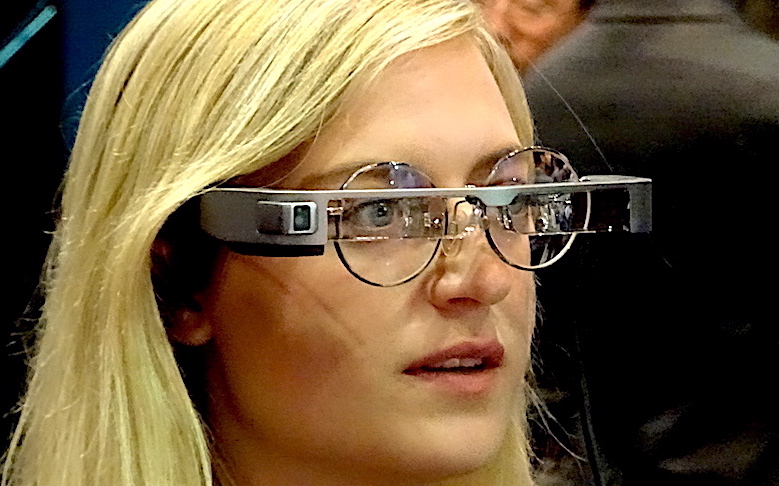 EMERGING TECH
EMERGING TECH
 EMERGING TECH
EMERGING TECH
 EMERGING TECH
EMERGING TECH
Once upon a time, the world went mad over “Pokémon Go” as hordes of people wandered the countryside clutching smartphones in search of Pikachu and other digital creatures. That game was supposed to herald the dawn of the augmented reality age.
Just two years later, the AR sky is still pretty dark. The Pokemon craze quickly dissolved and AR — which superimposes computer-generated virtual objects onto the real world through smartphones and head-mounted devices — exists largely at the margins among consumers, side-by-side with its close friend virtual reality.
But there are now signs that AR’s acceptance as a viable technology may finally be gaining traction — thanks largely to new interest in the enterprise as more companies adopt the technology and new data begins to document a genuine return on investment.
“We are pulling out of the trough of disillusionment and into the slope of enlightenment,” Allan Cook, managing director for Deloitte Consulting, declared during a presentation Thursday at the Augmented World Expo in Santa Clara, California, running through today. “We believe that a third of our business here in the United States is going to shift to digital reality over the next three to five years.”
The downside about that prediction is that, by most estimates, 2018 won’t be the Year of AR, even among enterprises. Ori Inbar, co-founder and executive director of the expo and founder of AR investment firm Super Ventures, noted that smart glasses, hawked by dozens of companies at the show, always seem to be three years away from a commercial breakout.
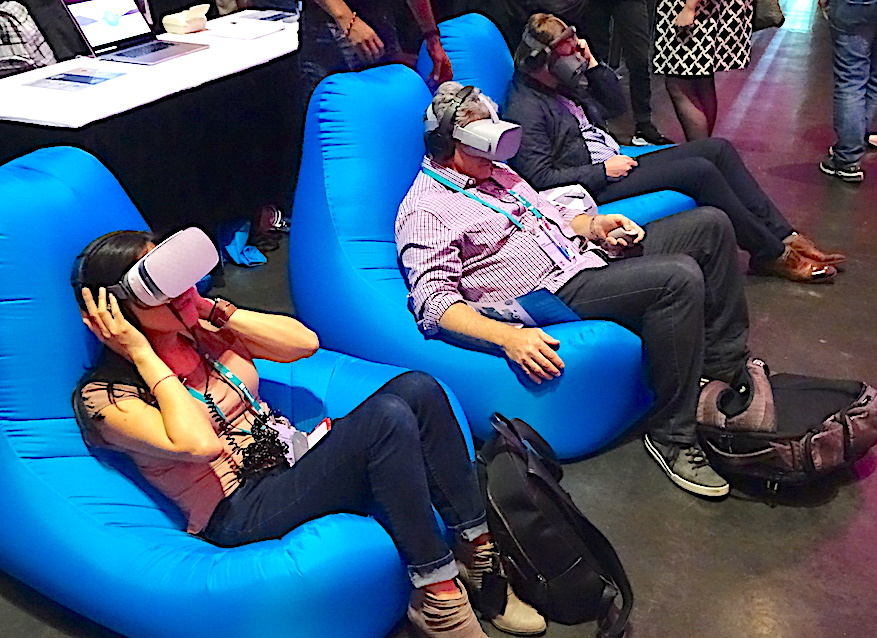
Even enthusiasts express disappointment that the market has developed more slowly than they had expected. “It hasn’t worked out as much as I had hoped,” said veteran Piper Jaffray financial analyst Gene Munster, now managing director of the venture capital firm Loup Ventures.
One key problem: Beyond “Pokemon Go,” truly breakout use cases for the technology remain few and far between. Tim Merel, managing director of Digi-Capital, which offers analysis and mergers-and-acquisition advice to AR, VR and gaming companies, said he has seen only one recent example of something that couldn’t be done any other way: Google Inc.’s demonstration of an AR-powered Maps service last month at its I/O conference that makes it much easier for people to navigate streets.
“We’re just at the beginning of these critical use cases,” he said. “It’s about incorporating AR into an everyday, mundane task.”
That will take beyond 2018 to happen, he said, though he thinks these examples will start to develop in the next 18 months. Helping that trend along, said Michael Boland, chief analyst at publication and intelligence firm ARtillry Intelligence: New, lower-cost devices such as Facebook Inc.’s Oculus Go headset, which he called a “gateway drug” for consumers, and Apple Inc.’s expected 2020 introduction of smart glasses should build excitement among consumers and interest from software developers.
Enthusiasm is already high among companies in the market, a reality apparent at AWE this past week. And a number of presenters at the Silicon Valley gathering offered plenty of fledgling use cases to prove their point.
BAE Systems has been using Microsoft Corp.’s HoloLens (below) to make electric propulsion devices, for example, realizing a 50 percent reduction in assembly time, according to Mike Campbell, executive vice president of augmented reality products at global software company PTC Inc.
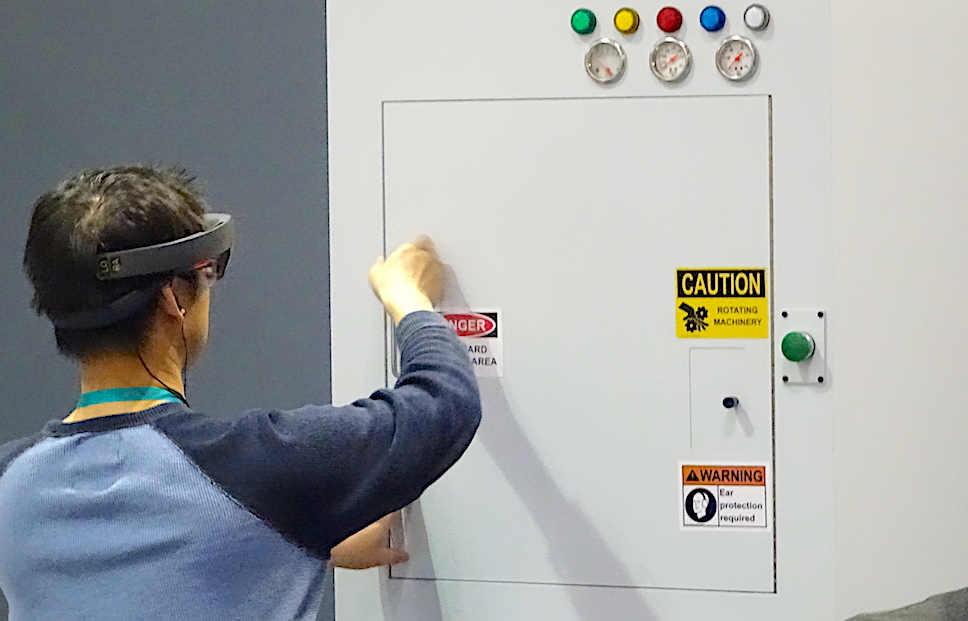
“This is a tool that’s really targeted at the industrial enterprise,” said Campbell, who also revealed that 10,000 or more than a third of PTC’s customers were engaged with the company in AR.
An executive from Scope AR (below), which provides enterprise customers with interactive solutions for repair and diagnosis, described how fast-food equipment supplier Prince Castle used the technology to fix critical machines remotely. With an AR-equipped headset connected to an expert who may be thousands of miles away, a technician or food service manager can quickly get broken equipment up and running. The firm has also worked with Caterpillar Inc. on an AR-based remote-support platform for heavy industry.
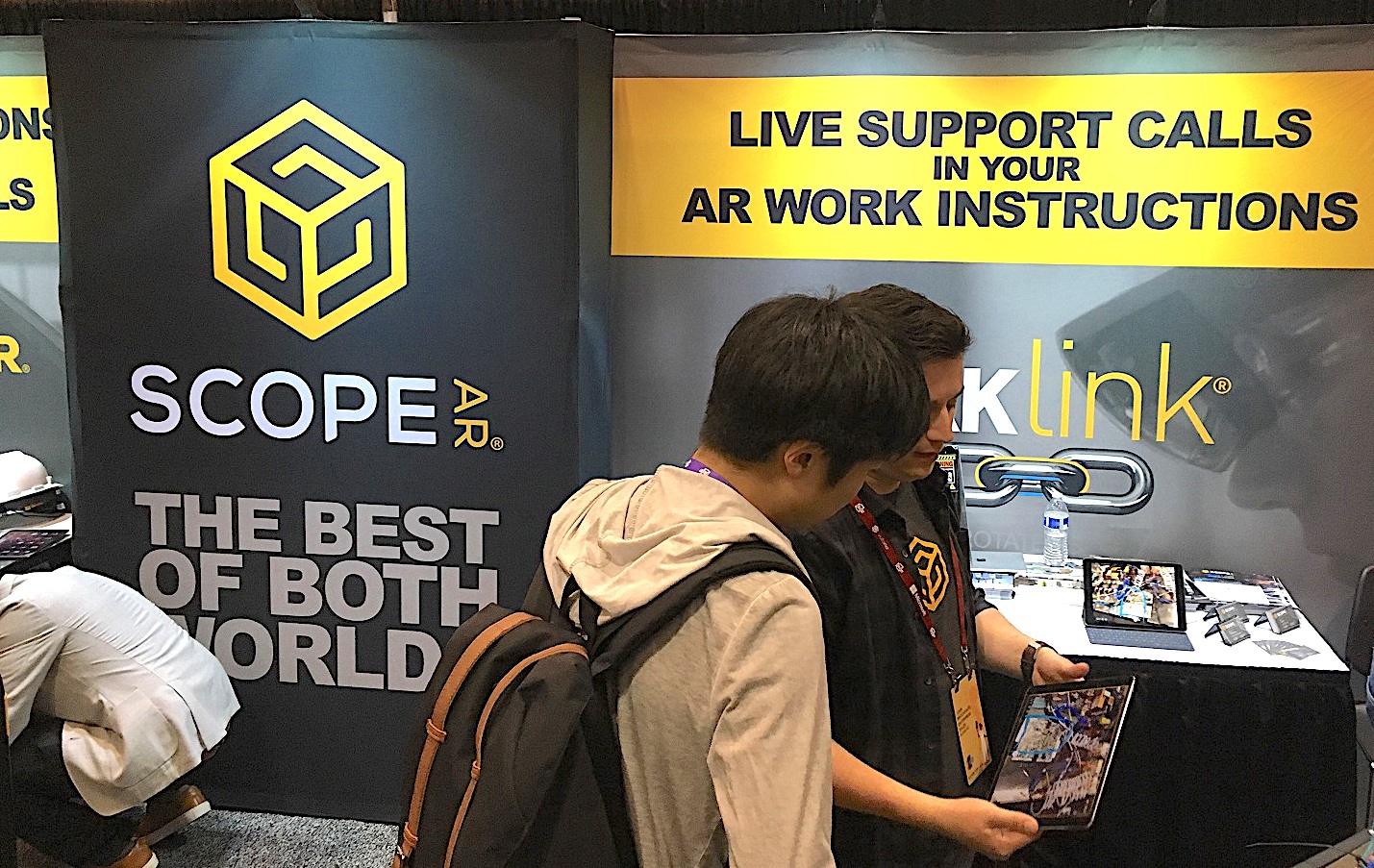
Prince Castle has already cut the number of service trips in half and reduced its labor spend between 50 and 80 percent, according to data presented by Scope AR’s president, David Nedohin.
“It’s no longer about putting AR on a pedestal and being cool,” Nedohin said. “It’s about measuring the impact in organizations.”
Yet there’s still a critical piece of augmented reality technology that remains unfulfilled and will likely limit widespread enterprise adoption until it is resolved: AR needs to become part of the existing array of enterprise tech products.
“It’s not just about the experience,” explained Deloitte’s Cook. “It’s how to get it into the current technology.”
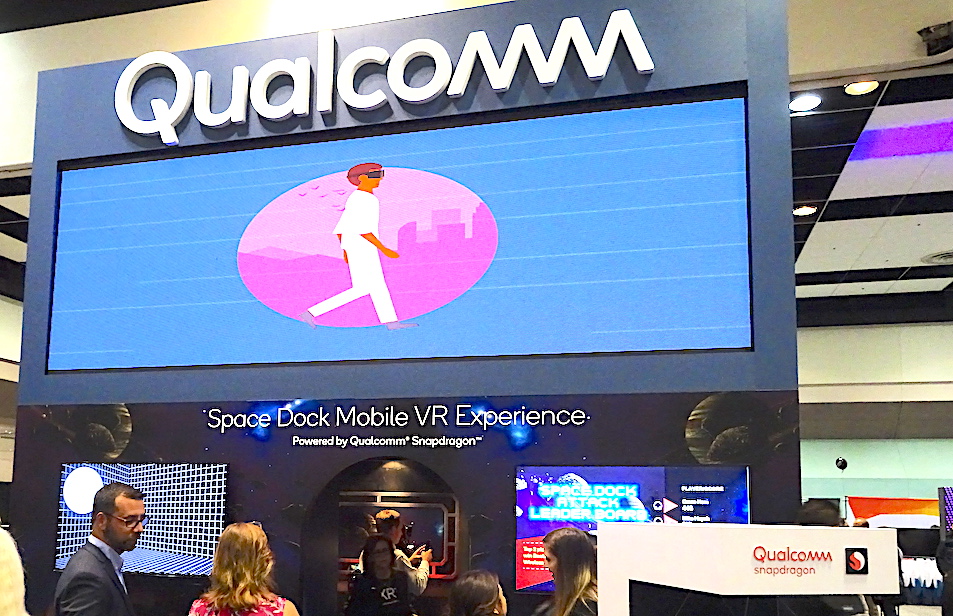
There are signs that providers for the AR ecosystem may be making progress in this area. On Wednesday, Qualcomm launched the Snapdragon XR1, the first chip made specifically for augmented and virtual reality devices. The new processor could reduce the cost of entry for firms seeking to introduce new AR or VR products.
“I’m most excited about Qualcomm’s XR1,” Alexis Macklin, an analyst with Greenlight Insights, said during a panel discussion on Wednesday. “A major company is making a statement… a bold statement.”
Cloud technologies are also beginning to enter the picture. One of the exhibiting companies – 6D.ai – has been described as “Waze meets AWS,” referring to Google Inc.’s traffic navigation app and cloud computing giant Amazon Web Services Inc. The firm is creating a tool for developers that will enable ways essentially to visualize a three-dimensional map of the world.
The cloud created by 6D.ai would make the process of identifying objects in the real world much easier. “Visual search is very important, monetizable and practical,” Boland said during a discussion of the AR cloud. “You can point your phone at something and get information on it or how to buy it.”

The growing number of AR use cases offers hope for those seeking to build a business in the volatile market. During one presentation on Wednesday, attendees were given a glimpse into how even the nation’s military was enthusiastically jumping onto the AR ship.
Researchers for the U.S. Navy are pursuing a project begun in 2016 called GunnAR. The initiative involves the use of AR-equipped headsets that would give onboard artillery gunners visual firing cues with target coordinates rather than verbal commands barked by a nearby sailor in what could be charitably called a very noisy environment.
“The military is going to buy up those headsets and we’re going to do crazy stuff with them,” said Heidi Buck, director of U.S. Navy’s Mixed Reality Lab.
And it’s a good bet they won’t be looking for Pikachu.
With reporting from Robert Hof
Support our mission to keep content open and free by engaging with theCUBE community. Join theCUBE’s Alumni Trust Network, where technology leaders connect, share intelligence and create opportunities.
Founded by tech visionaries John Furrier and Dave Vellante, SiliconANGLE Media has built a dynamic ecosystem of industry-leading digital media brands that reach 15+ million elite tech professionals. Our new proprietary theCUBE AI Video Cloud is breaking ground in audience interaction, leveraging theCUBEai.com neural network to help technology companies make data-driven decisions and stay at the forefront of industry conversations.